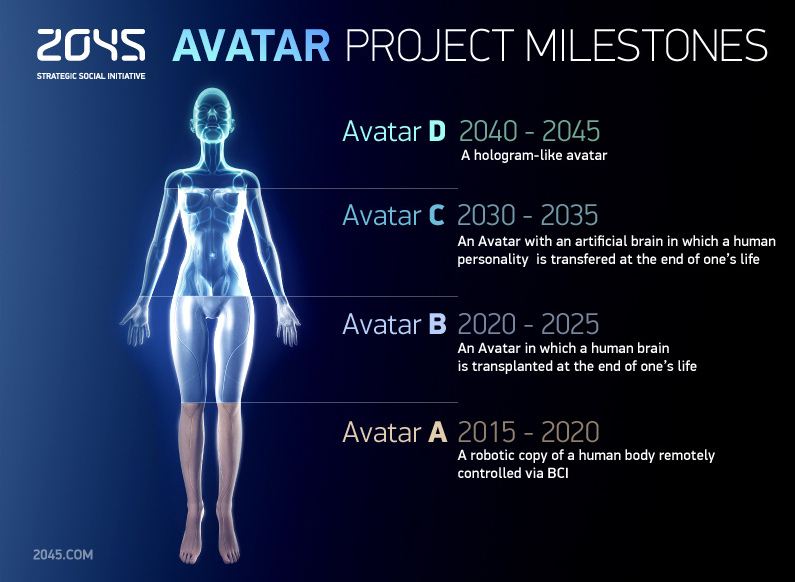In a world where sentient computers are just round the corner, what’s more real- Real Identities or Virtual Identities?
Virtual Identities Post-Death
A while back, I remember reading about some Muslim graves at a cemetery in Turkey. The grave markers were made of wood. Some hand lettered markers had weathered the years. The rest were mostly dilapidated, their inscriptions barely visible. Muslims renounce the use of granite stones or elaborate decoration as tomb markers. In Turkey, they make them of wood instead so that their names and details last only for a while before the wood disintegrates. The idea is to completely wipe off identities of men and women as new ones are created in the human world, a belief that is a component of Islam.
The wooden markers on Turkish graves might slowly decompose and become a part of the earth from which they were made, but unlike these, the Facebook pages, Twitter handles, Instagram hash tags, and all other sorts of digital identities of these dead people will live a long time after they die. Most of us have a social media presence. A virtual personality – made up of status updates love, life, death, losses, divorces, making water bed for cows, and countless other activities and thoughts we share online – has been developed. Tweets about all manner of topics from dogs barking next door to another chick-lit making rage and all the connections we’ve made on various social media platforms are all stored in the cloud. And if all this personal, social and historical information could be retained in this site, how hard could it be to re-create the person himself?
Much before the Zuckerberg skulduggery was launched, this concept of re-creating a person either dead or merely absent, was essentially explored on a Star Trek episode, Booby Trap. While on the Enterprise, Geordi La Forge, the ship’s engineer, needs to talk to Dr Brahms, the chief designer of the ship, for an important piece of information on saving the ship. Using the Starfleet personnel records, he constructs a hologram of Dr. Brahms to get her input. As he does so, he encourages the computer to inject personality into the simulation and slowly gains romantic feelings for Dr. Brahms. To break it down to the simplest idea, it is a sort of data analysis that uses a character’s history to produce some sort of artificial intelligence to re-creating a person in the form of a hologram.
While galvanising many technologies of our times, like the handheld mobile phone, Google Earth and palm PDA, Star Trek also reflects upon the conflicts and the political dimensions that represent the allegories of our contemporary cultural realities. Adam Ostrow, the Editor-in-Chief of Mashable, says that the idea is in the offing. Soon, it might be possible to have a Twitter profile that will tweet before you do. It could be a step towards personalising the interactions between man and electronics. But the question to be asked here is how real this virtual personality is. And what happens to a virtual personality after you’ve died? Could it… live on?
A Facebook friend of mine, Supriya Dubey, died a while back in a road accident. But I am strangely compelled to look at her Facebook page, which is kept alive by her family – re-tagging her old pictures, mourning publicly for her, uploading pictures of feasts and festivals, wishing her friends on her behalf, and celebrating her birthdays with overwrought posts by emotional friends. It’s almost like she is still alive…well, in my home feed at least.
Douglas Hofstadter, an American professor of cognitive science and Pulitzer prize winning writer, was a gleefully married man. After home parties, he and his wife Carol would sponge down the dishes together and relive the conversation they’d just enjoyed with friends. But then, when Carol was 42 and their kids were 5 and 2, Carol died of a brain tumour. A few months later, Hofstadter was looking at a picture of Carol. He illustrates what he felt in his book, I Am A Strange Loop. Carol’s death drove home the fact that when people converse, they send out little flares into each other’s brains. Friends, family and lovers create feedback loops of ideas and habits and ways of seeing the world. Even though Carol was dead, her habits and perceptions were still active in the minds of those who knew her. In our context, doesn’t this go a step further? That is, if these meteors live on digitally, where it doesn’t just reside in the minds of people who’ve met her in real life but also the many new people who can continue to “meet” her as well?
Look for instance, at Michael Jackson. The pop star earned $140 million last year, three years after his death. He has 884,000 followers on Twitter, more than he ever had before, where he has sent out 572 tweets, including, “RETWEET if you’re bad #whosbad.” It’s obviously not Michael Jackson sending out the tweets. But the people who manage these estates of dead celebrities realise that if you want to keep your star relevant, it helps to have a social-networking presence and the best way to do so is, by enabling it to emerge from the conglomeration of all the flares, loops and perceptions (as articulated by the Hofstadter theory) that have been shared and developed over years with Jackson’s fan base.
The gaming and chat rooms also become ‘queer havens’- spaces where gay and lesbian individuals can meet, affirm their identities, and safely explore their sexuality. Despite popular rhetoric to the contrary, analyses of how people use the internet reveal that these offline identities are emphasised in online worlds.
Existing virtual identities
The construction and design of virtual worlds is such that it allows its users to freely explore many facets of their people and personalities in ways that are not easily available to them in real life. Shweta Kumar, a friend, has become a fervent iPhone user. The device has became an adjunct to her life of already sizable worries, where she lives with a divorced mother and the mother’s ageing, dying lover. But her virtual self is happier than her real self and she switches to her virtual ids on the phone during family dinners, hospital visits and in the lonely hours of her nights. She is a globe trotting, cat loving peppery girl on Facebook; hardcore leftist on Disqus, cold cuts lover on Instagram and a news junkie on Reddit. Her phone is her greedy lover that constantly ‘tings’ her demands, deriving sadistic pleasure from persistently reminding her that, whatever she is doing, there are more fascinating things to be done and better roles to play. And that’s what traps you even more in this complex web…the possibility of having multiple identities.
In a virtual world, online identity is potentially much more flexible than real identity, allowing not only multiple ids, but also easy changes in race, class, gender, age, socio-economic background of individuals, allowing multiple identities and shared identity as well. Look, for instance, at the avatars, the graphical representation of the internet user which may take either a 3D form, as in games or virtual worlds, or a 2D form as an icon in Internet forums and other online communities. Photographer Robbie Cooper studied the relationship between online gamers’ real identities and avatars, taking photographs of the two images for the book he co-authored, Alter Ego: Avatars and their Creators. In an interview with CNN, he says, “My feeling about it is, you might create a character and enjoy the anonymity of it at first, but that character then becomes a bigger part of your life.” Cooper says the general trend is to choose idealised avatars with either more powers or better looks. “It does seem like, in almost every case, the avatar is bigger, better, faster, it can fly, it has abilities the person doesn’t have in the real world. And when you spend so much time with a character, you slowly want to, and start, behaving like one. Another observation is that in games where people can gender-bend, men are much more likely to do so than females, mostly because female avatars are treated better in games, they are more often given free gifts, and if they are going to stare at a character for twenty hours a week, they would rather look at a female!”
The gaming and chat rooms also become ‘queer havens’- spaces where gay and lesbian individuals can meet, affirm their identities, and safely explore their sexuality. Despite popular rhetoric to the contrary, analyses of how people use the internet reveal that these offline identities are emphasised in online worlds. Perhaps no one knows you are a dog on the internet, as one New Yorker cartoon by Steiner asserts, but if you are the only dog you know and you want to look for others like you, then blazoning your ‘dog-ness’ becomes an important part of how you present yourself online.
However, virtual identities present a problem for those who engage in virtual worlds, and that problem is trust. Anonymity can leave you in a flux, wondering how much, if any, of an individual’s virtual identity is really real, Albert Borgmann, an American philosopher, specialising in the philosophy of technology, admits that in itself, virtual identity can be “morally inert” and that the ethical danger of it lies in its tendency to leave us “resentful and defeated” when we are forced to return from its “insubstantial and disconnected glamour” to the organic reality which, “with all its poverty, inescapably asserts its claims on us” by providing “the tasks and blessings that call forth patience and vigour in people.” The intrinsic problem here is the lack of exposure to risk and without risk, there can be no true meaning or commitment found in the electronic domain. Perhaps this is why online sports are never the same as real sports. Instead, we are drawn to online social environments precisely because they allow us to play with notions of identity, commitment and meaning, without risking the irrevocable consequences that ground real identities and relationships.
A virtual identity that is different from one’s real life identity can take a lot of psychological effort to maintain. Do the risk-free adventures make people bolder (perhaps in a misguided way) in real life? Ultimately, is withdrawing further into the virtual identity the only outcome, or can it have an impact on real life goals? Can it have the result of making you try to become more like your avatar? Or perhaps one of the big questions that we don’t yet know the answer to is whether you can make the computers – and in turn your virtual identities – smell, feel, see, hear and taste.
If you put sufficient genetic algorithms and heuristics together, do you form a thinking conscience, or is it just a shallow imitation of one? If computers are progressing at an exponential velocity (doubling every 18 months, a la Moore’s Law) and the human mind progresses slowly over centuries and is limited by the size of our brains, then civilization has reached a stopping point in our lifetimes. Of course, the laws will not be able to stop it as impish programmers get bored and start dumping sentience and your virtual identity might just throw over the real identity and start over like never before.



